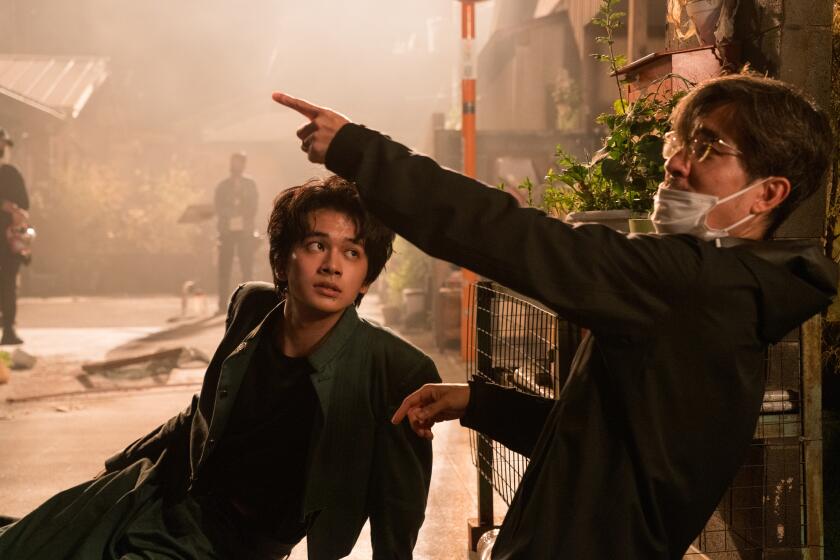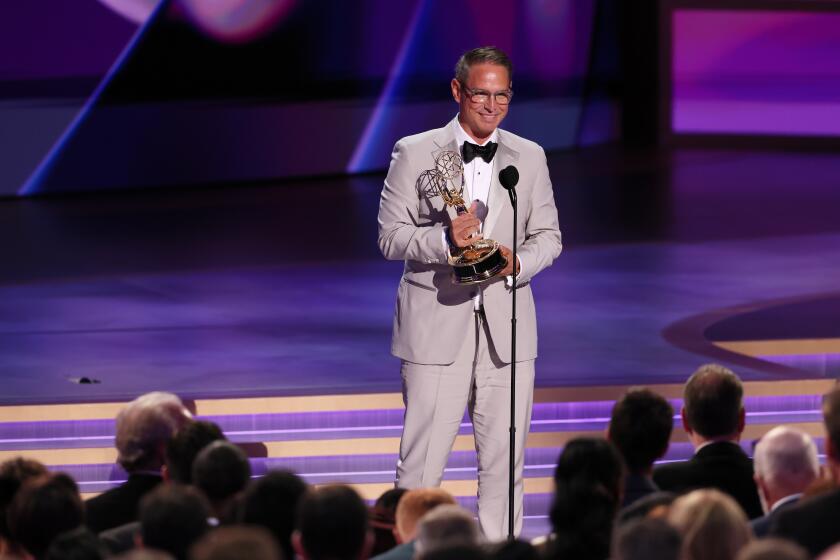Say hello to the new ‘toons on the Emmys block
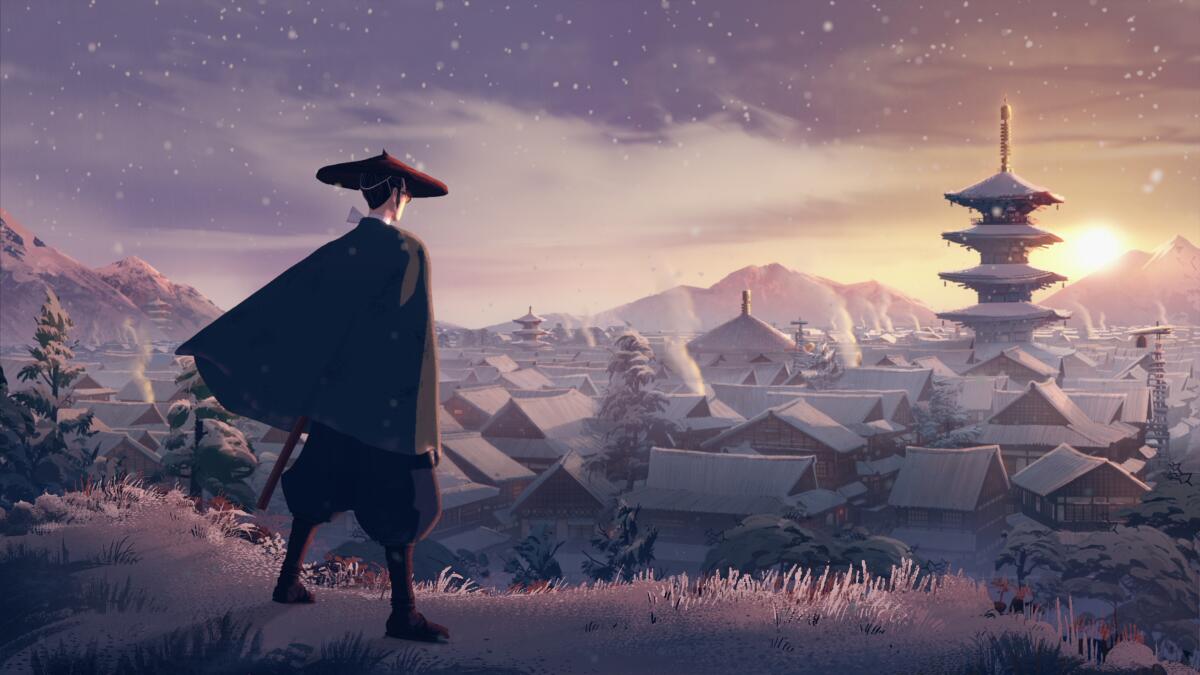
- Share via
Of the five Emmy nominations for animated program, three fresh faces have found their way onto the ballot: “Blue Eye Samurai,” “Scavengers Reign” and “X-Men ’97” (Returning favorites “The Simpsons” and “Bob’s Burgers” claim the remaining spots). And despite their diverse visual style, the three find common ground in camera movement, layered characters and visceral imagery.
For “Scavengers Reign,” an astonishingly original concept that pushes the boundaries of biological wonderment, creators Joe Bennett and Charles Huettner saw the potential of adult animation in 2014. “The genre was a very different thing in America for a long time. Now it’s being treated a little bit more elevated,” Bennett says. “We were, for a very long time, thinking, ‘It’s coming, it’s coming.’ It’s a very surreal feeling now that it’s here, and people are excited about it.”
“Blue Eye Samurai” received its greenlight near the beginning of the pandemic shutdown. “We were very fortunate that we went out with this show as an adult animated drama at the time Netflix was just beginning to really invest in an adult animated department,” says co-creator Michael Green. “Our goal was to be unconventional and not to do this in any traditional anime form. We were going to build something new, and we had to figure out how to make the show while making the show.”
As it looks to build its global audience, Netflix in the last five years has released more than 10 TV and film adaptations based on popular Japanese manga or anime.
In retooling a ’90s Saturday morning classic cartoon, “X-Men ’97” director Emi/Emmett Yonemura says it was phenomenal to work on a “property that really cares about what’s going on in the world today. It’s wonderful to work with a studio like Marvel that is willing to explore what animation can do and put the budget behind it to tell great stories.”
Here’s how each animated newcomer found its stride.
“Blue Eye Samurai”
Leading up to the release of “Blue Eye Samurai,” co-creators and spouses Amber Noizumi and Michael Green said their “fondest hope was that a few people would resonate with it.” Now, with their Emmy nomination in hand, they are already working on a second season, which follows Mizu (voiced by Maya Erskine), a blade-wielding warrior savant hell-bent on revenge. “We were really touched that it was seen as widely as it was and discussed and accepted,” Green says. The riveting narrative centers on a half-Japanese, half-white character in the backdrop of 1600s Japan. The borders of the island country are closed to outsiders, making Mizu an outcast. In molding the character, the pair pulled from Noizumi’s upbringing. “Growing up half-Japanese, I have two siblings and I look the most Japanese,” she says. “And I remember being like, ‘Why couldn’t I have lighter hair, or why do I have to have a round face like my Japanese father?’ So we took all those things and flipped it on its head and into a character who wants to hide being white and is struggling with that turmoil and externalizing it with violence against other people when really she hates herself more than anyone else.” It’s in those moments of violence where the mesmerizing beauty of the animation shines through. The camera poetically dances like a ballerina, juxtaposing the methodical thrashing of blood and death. “The movements are almost Bunraku [a form of traditional Japanese puppet theater],” Green notes.Adding to the depth is a layered character backstory that’s revealed through an alternating timeline. “We knew we wanted to enrich it with inflection points of what made Mizu the creature she is and how the rare moments of kindness have touched her so that we believe her,” Noizumi says.
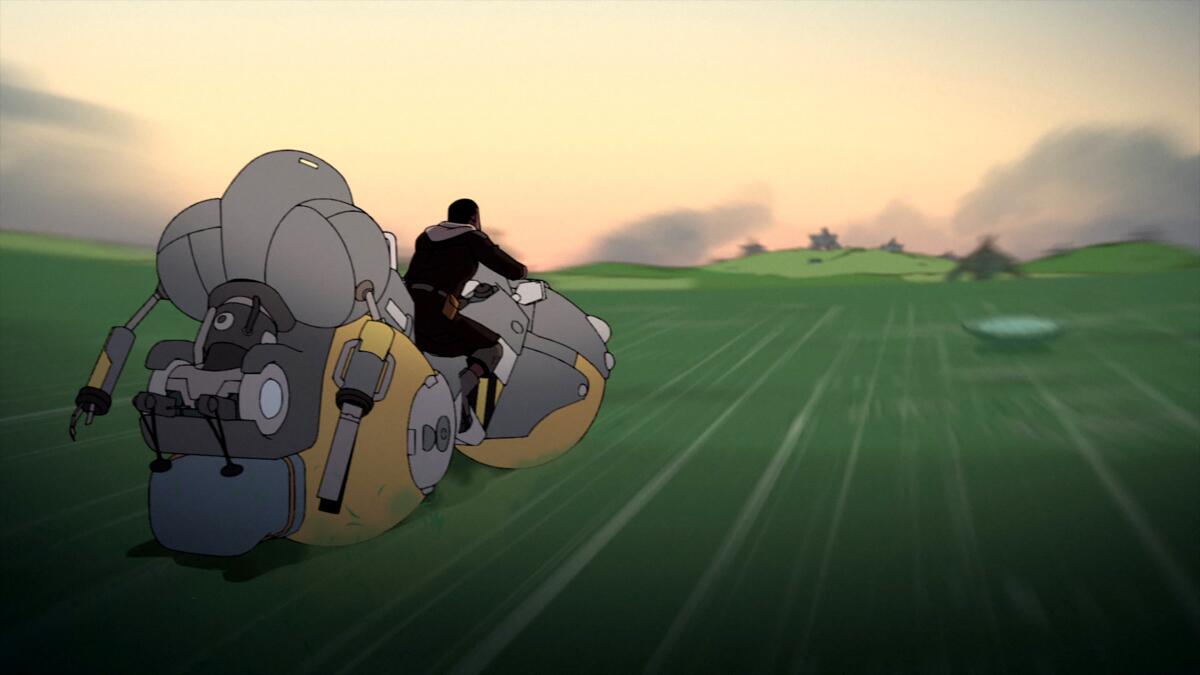
“Scavengers Reign”
If somehow surrealist painter Salvador Dali made friends with Isaac Newton, they just might be able to conjure the vividly enigmatic sci-fi world of “Scavengers Reign” from Joe Bennett and Charles Huettner. The 12-part series, adapted from a short they created in 2016, follows a stranded crew living on a distant planet filled with peculiar oddities that might end up killing them. Creatures such as white dragon-like birds, glowing blue sponges, bug-eyed sloths, mutant frogs, flying bunnies and the creepiest of crawlies imaginable enrich each frame with impressive detail and lively color. Holding it all together is a narrative that connects the visuals in such a way where everything relates and has a purpose. “A big part of that was the fact this show came from an idea that really only had visual exposition. The short we made had no dialogue,” Bennett notes. “We wanted to convey to the audience what the relationship and the symbiosis is without any character having to point it out. How we did that is by thinking about a certain ecosystem and all the organisms living in it and then how they all relate with each other.” Another aspect to the cohesiveness was cause and effect. “It played a big role in not only creating them but how they would act,” Huettner adds. A writers’ room that worked in unison with the design team streamlined the process. “We had a nice threading back and forth where we could develop things,” Bennett says. “But a big thing was showing these characters having so much psychological turmoil and suffering through the backdrop of this planet, which is pretty merciless and there’s no empathy. There was something very exciting about that every time.”
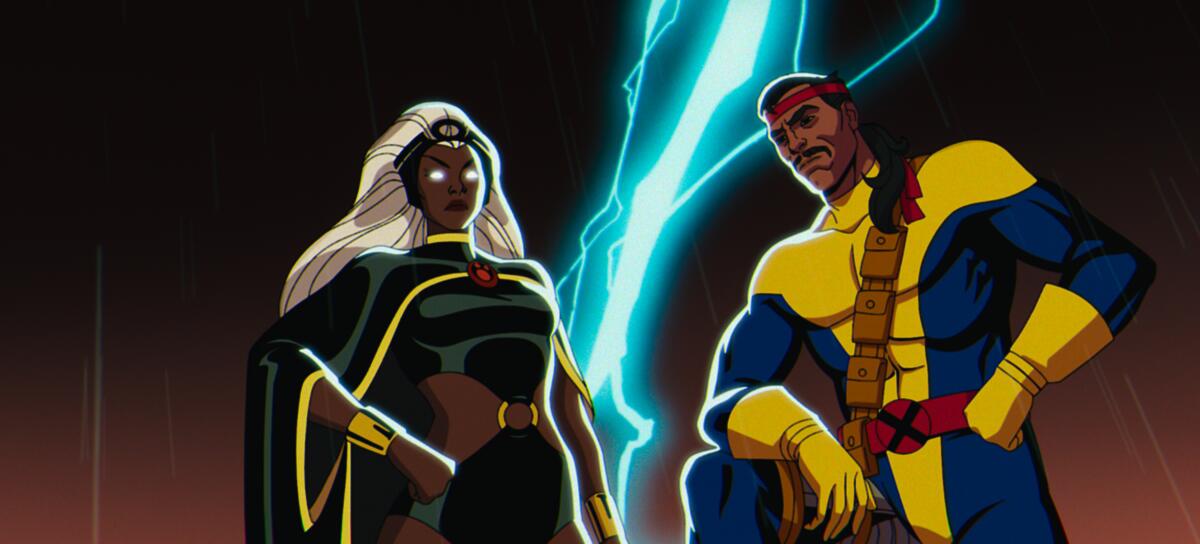
“X-Men ’97”
“I love getting to live in those moments that just, hopefully, rip people apart,” says “X-Men ’97” director Emi/Emmett Yonemura about the shocking deaths within its Emmy-nominated fifth installment “Remember It.” Created by Beau DeMayo, who exited before its premiere, the comic book show picks up where the popular “X-Men: The Animated Series,” which aired from 1992-97,” left off. With its visceral imagery and storytelling, the updated series has transcended a once nostalgic cartoon into a show for adults. “We never wanted it to feel like you’d seen this before, even though we knew we were working with material that’s already been out,” says Yonemura, who helmed four episodes. In bringing a fresh coat of animated paint to the superhero world, the art and design team found moments to subtly shift the color palette and approached camera movement that honored live action. “We looked at live action because it’s the kind of medium that makes people want to pay attention in a serious way that you might not necessarily see in a standard comedic setup or in children’s programming,” suggests Yonemura. Pacing was the cornerstone for the director in bringing the series to screen. “I felt like we had to earn the big moments,” Yonemura says. One of the more ambitious scenes was a sentinel attack that decimates the mutants. “We went through multiple versions of that sequence, and one thing that Beau had actually stressed was how he wanted the sentinel to first appear and how he wanted a lot of the destruction to be on the ground level,” notes Yonemura. “It was very ‘War of the Worlds’ where no one knows what’s going on and everything feels out of sight to even catch your breath.”
More to Read
From the Oscars to the Emmys.
Get the Envelope newsletter for exclusive awards season coverage, behind-the-scenes stories from the Envelope podcast and columnist Glenn Whipp’s must-read analysis.
You may occasionally receive promotional content from the Los Angeles Times.
